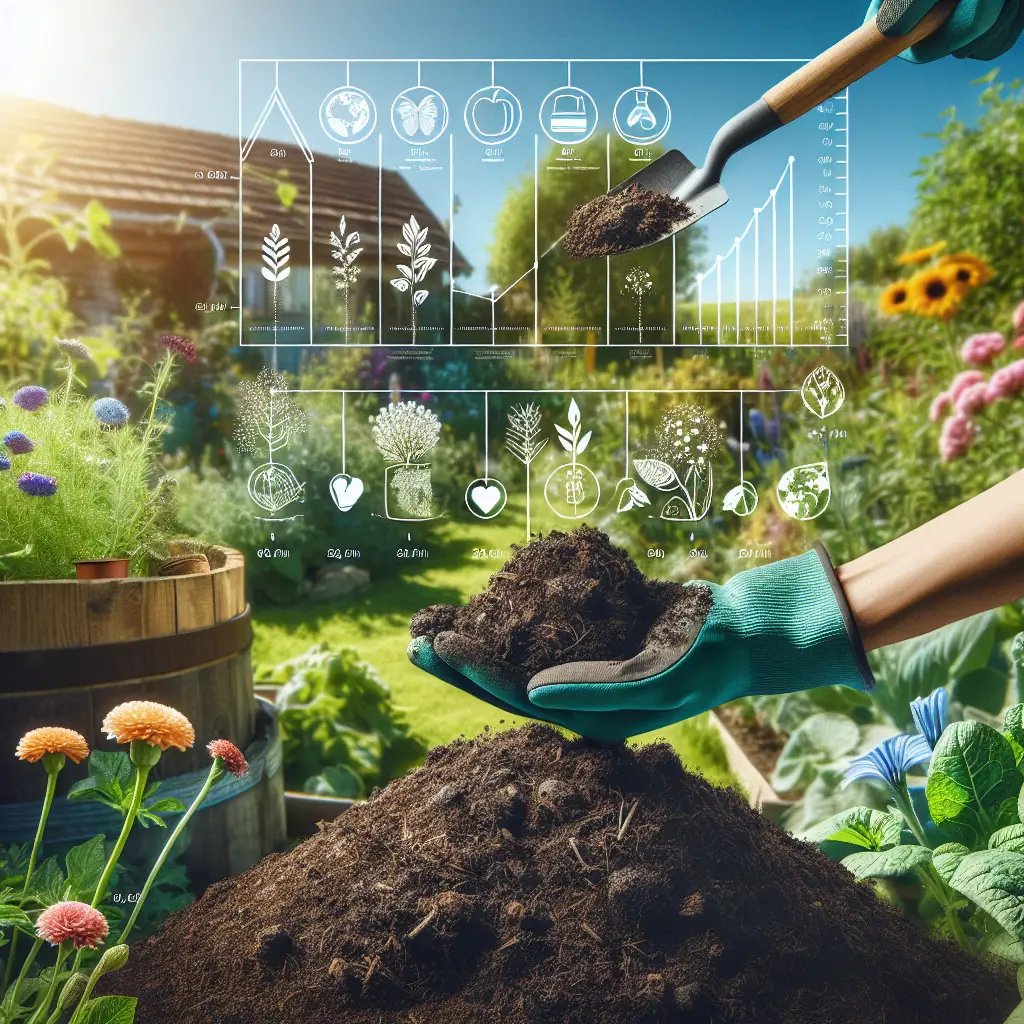Title: How Much Compost Is Enough For My Garden?
Are you looking to enrich your garden soil this season but find yourself puzzled about how much compost is just right? Fear not, dear gardener. Just as the perfect recipe calls for precise ingredient measurements, your garden flourishes best with the correct amount of compost. So, let’s dig into the nitty-gritty of compost application to ensure your beloved plants thrive.
Comprehending Compost’s Role in the Garden
Before we toss on those gardening gloves, it’s crucial to understand what compost does for your garden. Compost is the black gold of gardening (Cornell University – Composting in Schools), a rich, organic matter that enhances soil structure, retains moisture, and provides a symphony of nutrients for plant growth. It’s full of life, from microscopic bacteria to earthworms, all working in unison to break down organic matter into a form that plants can easily absorb.
Quantity Quandaries: A Measured Approach
If you’re wondering, “How much compost do I need?” here’s a simple mantra to garden by: it’s better to err on the side of caution. Too much compost, especially if it’s not fully decomposed, can harm your plants due to excessive nutrient concentrations that can lead to imbalances in the soil.
The rule of thumb is to apply a layer of compost about 2 to 3 inches thick across your garden beds. If you’re integrating compost into a new garden bed, aim to mix it in with the top 6 to 8 inches of soil. For an established garden, a top-dressing of 1 to 2 inches of compost yearly before planting is recommended.
Calculating Compost for Your Garden
To calculate how much compost you need for a specific area, you can follow this formula:
- Measure the garden area (length x width) to determine the square footage.
- Decide how deep you want the compost layer to be (in inches).
- Use an online soil calculator or this conversion: for every 100 square feet, you’ll need about 3 cubic yards of compost for a 1-inch deep layer.
Making Compost Choices: The Buying Guide
Not all compost is created equal. When shopping for compost, choose a reputable brand known for quality compost production. If you wish to buy the compost, consider an organic option like the Miracle-Gro Organic Choice, which is easily accessible and has a trusted track record for balancing soil nutrients effectively.
The Homegrown Advantage
Alternatively, creating your own compost can be incredibly satisfying and cost-effective. Home composting systems range from simple backyard heaps to sophisticated tumblers. Composting at home also means you have complete control over the ingredients that go into your mixture, ensuring a nutrient-rich end product for your plants. The Environmental Protection Agency (EPA) provides guidelines for home composting, helping you to set up your system successfully.
Applying the Compost: Techniques and Timing
Once you’ve calculated the amount of compost you need, timing is everything. The best times to apply compost are:
- In the spring, just before planting, to warm up the soil.
- After harvest in the fall, to replenish nutrients lost during the growing season.
When applying compost, distribute it evenly across your garden beds and gently mix into the soil with a rake or hoe. For container gardening, blend compost with your potting mix to supercharge your container-bound plants.
Monitoring and Maintenance: The Path to a Healthy Garden
After applying compost to your garden, monitor your plants’ progress. If plants appear to lack vigor or show signs of nutrient deficiency, conducting a soil test may be in order. Your local cooperative extension or a private lab can analyze your soil and provide recommendations (National Gardening Association).
For the eco-friendly gardener, compost tea is an excellent way to boost plant health without overdoing compost application. This nutrient-rich liquid fertilizer can be made simply by steeping compost in water. Applying it can enhance soil microbiology and help plants ward off diseases.
A Bountiful Harvest Awaits
In essence, your garden’s compost needs are not unlike the care we give to our diets – a little moderation goes a long way. By understanding the right amount of compost to use, you set the stage for a vibrant, productive garden that will be the envy of neighbors and a sanctuary for pollinators.
With these composting guidelines woven into your gardening practice, you’re ready to head out into the garden with confidence. Remember, consistency is key – annual applications of compost will ensure your soil remains fertile season after season.
May your hands be dirty and your harvests bountiful!
Final Thoughts: Sustainability in Your Backyard
As you work towards a lush garden, remember that composting isn’t just about plant health; it’s also about sustainability. Composting reduces landfill waste by recycling kitchen scraps and lawn debris into something incredibly valuable for the environment. So, not only are you growing beautiful flowers or delicious vegetables, you’re also doing your part for the planet.
Happy composting and gardening, dear green thumbs!


